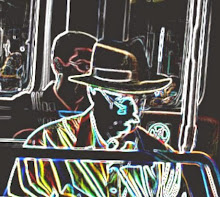The Alvin Ailey Company kicks up some spirit ...
Let me say first that I don't dance myself, personally. I have in fact a long history of not-dancing, stretching all the way back to elementary school when they tried to teach us a wooden fox-trot in Phys Ed class. Not even the advent of rock and roll got me moving, despite some abortive practice sessions in a sort of alley between portable school buildings. Perhaps the closest I have come was participating in some "creative movement" classes with local dance diva and gestalt therapist Poldi Orlando.
However, my own ineptitude only increases my appreciation of those to whom bodily movement is an expressive language that surpasses words and music. For example, when is the last time you can remember the audience giving a standing ovation at the intermission in a performance of anything? That's one measure of how much we were pleased by last weekend's performance of the Alvin Ailey Company at the Ziff Opera House in Miami.
The work that produced this enthusiasm was not even one of Ailey's own pieces but rather Festa Barocca (2008), choreographed by Mauro Bigonzetti. There was plenty of meat for the whole cast to get its teeth into, as the various movements, all set to the music of Handel, progressed from ensemble to solos and duets and mixed pairs.
It was a visual feast as well, with gem-like colors and dramatic but understated lighting. Everyone was in skirts, and let me just add that it takes a real man to wear one with the panache exhibited by these guys. On the men the style evoked the sarongs favored in the South Seas, and allowed them to experiment with costume manipulations normally reserved for prima donnas.
After the aforementioned standing "O" and a pause to stretch, the program resumed with Solo (1997) by Hans Van Manen. Interestingly, this piece was danced in turn by three of the men despite the name. It also provided some light, almost comedic, relief as the dancers experimented with a variety of ways of entering and leaving the stage.
The finale was reserved for Ailey's landmark work, Revelations (1960). This piece, which has received the honor of a permanent endowment for its continued performance, manages to encapsulate the entire history of the African diaspora. From the opening tableaux, in which the wing-like arm motions of the dancers manage to evoke both ocean waves and the flight of the spirit, it evolves through suffering and sin to joy and redemption.
I also noted how the dancers were using even their fingers to communicate with us -- a dozen dancers, two dozen hands, one hundred and twenty fingers all splayed and individually visible.
At the end, after another ovation got us to our feet again, the cast went into a reprise of the final number, "Rocka My Soul in the Bosom of Abraham," this time with our clapping added to keep the time. I feel sure the opera house has never rocked like this to Puccini. Somebody say Amen!










No comments:
Post a Comment